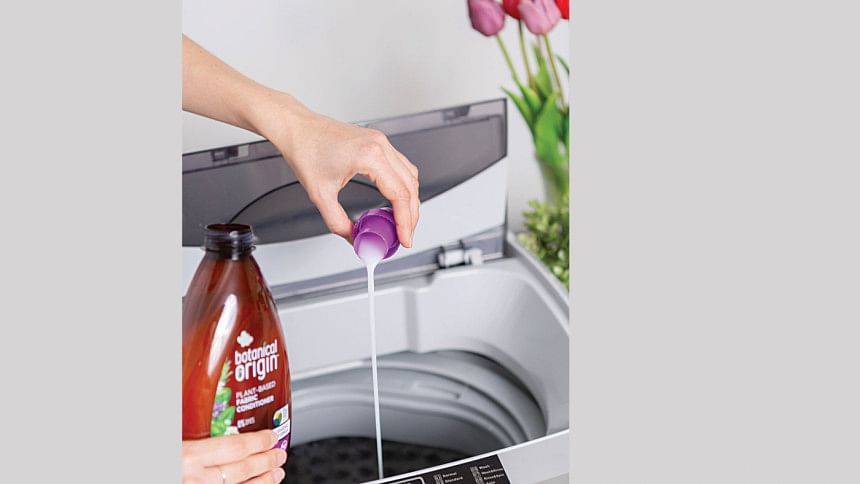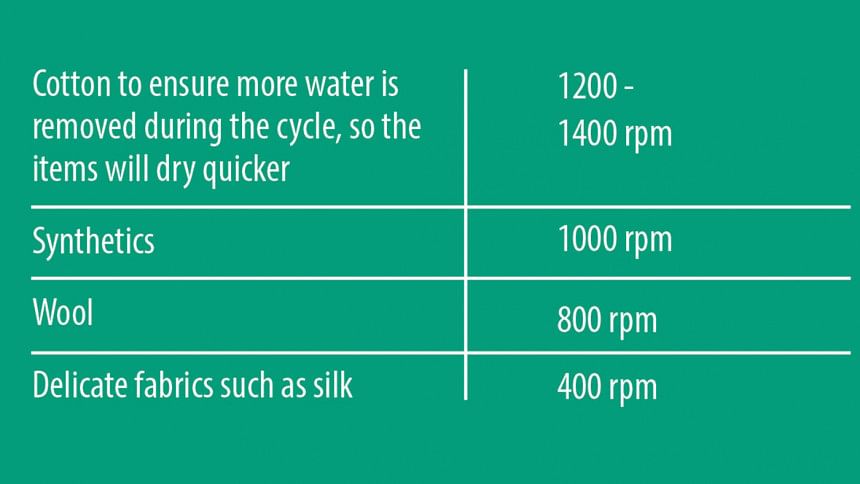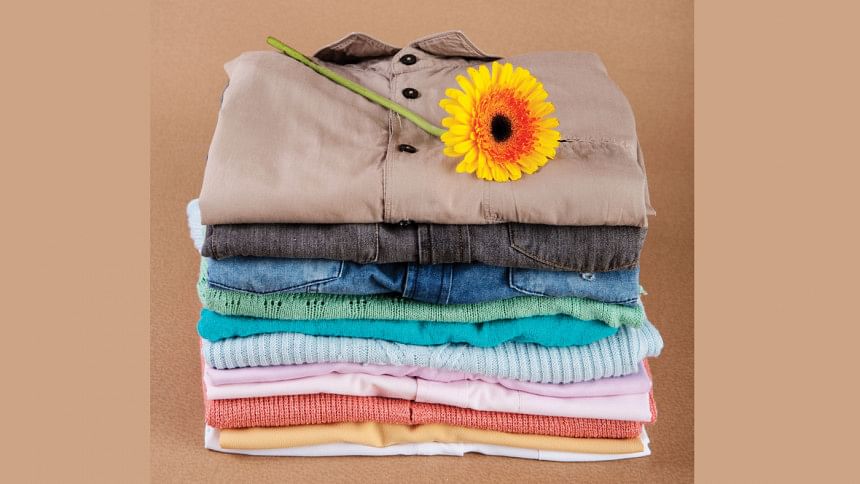Your cleaning partner

Given the hustle and bustle of urban living, people constantly look for easier and more efficient routes to deal with regular upkeep. Due to its time-consuming and energy-draining nature, laundering would hit one of the top spots among those mundane jobs. However, the presence of a washing machine in the home can make a lot of difference if used accurately. Washing via washer is often perceived synonymously with loading dirty laundry, adding some detergent, and letting it spin. But, there are more to consider ranging from cycle options, and temperature to choice to spin. Read this article to comprehend key avenues of using your washing machine proficiently.
CORE UNITS OF A WASHING MACHINE
Water pump – facilitates a few basic functions including controlling water during the wash cycle and pumping out dirty water during the spin cycle.
Drum - has mostly two parts; inner drum and outer drum. The laundries are loaded in inner drums. The outer drum, containing the inner one, prevents water leakage to other parts of the washer.
Washing machine motor - rotates the drum managing speed and direction as per requirements to circulate clothes during the wash cycle and the spinning cycle.
Control interface - allows users to manage and customize the washing machine functions, mostly placed at the top or front side of the machine, depending on the washer type.
Timer - one of the vital parts of the control interface, manages the wash time both, automatically and manually.
Drain pump - releases the dirty water after washing clothes.
Heating element - placed mostly at the rear of the machine, heat the water to the desired temperature.
Detergent drawer - a storage unit to put detergent powder and fabric conditioner.

STEPS TO FOLLOW, BEFORE LOADING CLOTHES INTO THE MACHINE
Sorting by fabric types and tone
Given the possibility of darker-toned fabric ruining lighter ones, it is advisable to wash them separately. Avoid washing delicate fabrics (such as silk, chiffon, and lace) with heavy and thick fabrics (such as cotton and jeans) as the water temperatures vary depending on the fabric type.
Preparation
Emptying pockets: Don't leave anything in clothes pockets be it coins, a used tissue, or keys as these can lead to certain damages to the machine. For example, metal objects such as coins or keys potentially damage the washer drum, and the front glass door, clogging the drainage system even tearing delicate fabrics and creating rattling sounds while operating. Furthermore, relatively soft objects like paper tend to disintegrate into tiny fibers, covering the clothes with lint.
Mesh bag: Smaller and delicate items such as shoelace, lingerie, and delicate fabrics such as silk, and satin must be sealed in a mesh bag for extra protection. The prime reason is to keep the laundries from snagging and stretching because of the washer's agitation. Moreover, items with metal hooks must be fastened while putting them inside the mesh bag.
Others: Don't forget to zip up zippers and button all buttons. The agitation of the wash cycle can cause the zipper's metal teeth to damage the drum wall. Also, knot the straps. Turn screen-printed, block-printed, and dark-colored clothes such as jeans inside out to reduce fading.

Segregating based on stain intensity
Heavily stained items require pre-treatment depending on the types of stains. The three common pretreatment steps are applying a stain remover, gently rubbing, and soaking in water. Firstly, pour or spray the suitable stain remover directly onto the stains. Instead of rinsing it right after applying, it is advised to let the remover sit for 5 to 10 minutes to allow the remover to penetrate the fabric. The tough stains may require further rubbing either by hand or soft brush. If the clothes are heavily soiled, soak them in detergent-dissolved water for around 30 minutes.
A small guide to treatment matched with stain
Food and Drink Stains: Besides stain remover, white vinegar mixed with water can be used to treat stains of coffee, tea, fruit juice, etc. Use dish soap or liquid laundry detergent to treat greasy stains.
Mud stains: Before applying any detergent, it is wise to dry mud or dirt to brush off excess mud residue.
Protein-based stains: A bit of enzyme-based detergent dissolved in cold water is ideal for dealing with stains of blood, sweat, etc.
HOW TO LOAD A WASHING MACHINE?
Loading the drums with clothes until packed is not a worthy tactic as it can only trigger mechanical failures. Overloading, the most commonly made mistake leaves no space for the clothes to rotate, for water to properly fill and circulate. Circulating water is essential for the detergent to dissolve and the formation of suds to clean effectively.
It is recommended that a load of laundry shouldn't fill the washer tub more than three-quarters. For synthetics and delicate fabrics fill the drum half full.
A trick to calculate the load is placing your hand into the drum, if it fits between clothes and the drum wall, you're ready to begin.
"Usually the manuals are pretty comprehensive, adding all the information about daily usage. Looking at the manual book thoroughly will guide the user about the specific model they bought, as functions vary depending on the type and model," said Fazle Rabbi Khadem, Brand Manager, Walton Home & Kitchen Appliance.
CLEANING AGENTS
Like loading the drum correctly, detergent placement, selection, and measurement are equally vital. The placement of the dispenser drawer may vary depending on the type of washing machine. High-definition models may have advanced dispensing feature auto-dosing, placed either at the top or back of the machine. The front-load machine's dispenser drawer is mostly located at the top left corner having compartments for fabric conditioner. Some top-load machines have dispenser drawers at the top, and in some top-load models, the detergent is initially dissolved into water before loading it with laundry.
Read the detergent dosing instructions on the washer. The amount usually depends on factors such as load-size, hardness of water, and level of dirtiness. Detergent options available in the market include washing powder, the cheapest option, and liquids. For heavily soiled clothes enzymes-based detergents such as Surfexcel, and Rin are the best options. Liquid forms are great for keeping colors bright and for everyday washing. Fabric conditioner keeps clothes soft, makes them smell nice and fresh, and generally makes clothes last longer.
Adding fabric softener at the correct time ensures your clothes come out soft and fresh, ensuring longevity. Pour fabric softener into the designated compartment in the dispenser drawer at the start of the wash. The machine automatically dispenses the fabric softener during the final rinse cycle. The fabric softener is manually added during the rinse cycle of the top-load machine without a softener compartment.

PICKING THE RIGHT TEMPERATURE
Cold water 15°C - 27°C
This temperature range is ideal for fabrics such as silk, lace, lingerie, dark or bright colors, synthetics (polyester, nylon), and wool in some cases. The best option for items that may shrink, fade or bleed color. It also saves energy and reduces costs.
Warm water - 32°C - 43°C
It can be termed as all-rounder, for everyday laundry that isn't heavily soiled. With a good detergent, this temperature can handle mixed wash, fabrics including cotton blends, some synthetics, lightly soiled clothes, and towels. It's hot enough to wash clothes, but not hot enough to shrink or fade them. In this range oils and dirt can be removed more effectively than cold water.
Hot water - 54°C - 65°C
It is ideal for sanitizing and removing tough stains. Fabrics include whites (cotton and linens), heavily soiled items, towels, and bedding.

KNOWING THE WASH CYCLE
The washing machine has a diverse range of wash cycles serving different purposes. The most common washing cycle options are a heavy-duty wash for heavily soiled clothes, Quick wash (combining cotton and synthetic), Aqua wash (delicate and lighter wash), wool wash (woolen fabrics), hand wash (sensitive fabrics require delicate care), etc.
Putting clothes on the wrong wash cycle can cause laundry to fade quickly. Check the fabric care label on your clothes to find the recommended wash cycle.
ABOUT SPIN SPEED
Spin and rinse – the steps after the wash cycle rinse laundry with water before spin drying it. Most machines are set to 1200 - 1400 rpm. The spin cycle can be tweaked depending on the fabric care instructions.
Likewise other home appliances, now-a-days washing machines come with remote controlling facility through app, making it more convenient. The prominent brands national and international ranging from Singer, Samsung to Walton have apps which can be operated through connecting with the smart washing machines.

 For all latest news, follow The Daily Star's Google News channel.
For all latest news, follow The Daily Star's Google News channel. 



Comments